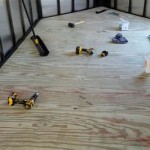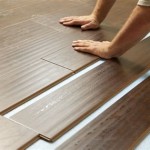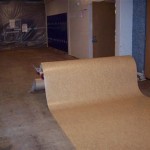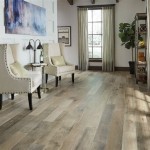Navigating Hardwood Flooring Showrooms in NYC: A Comprehensive Guide
New York City, a hub of design and innovation, offers a diverse array of choices for homeowners and designers seeking the perfect hardwood flooring. Selecting the right hardwood flooring requires careful consideration of factors such as wood species, finish, construction, and installation. Visiting hardwood flooring showrooms in NYC provides a tangible experience that online research simply cannot replicate. These showrooms allow individuals to examine samples, compare textures, and consult with experts, ensuring informed decisions that align with their aesthetic preferences and functional requirements.
The process of selecting hardwood flooring can be overwhelming, considering the multitude of options available. Showrooms condense this complexity by offering curated collections that showcase the latest trends, classic styles, and innovative technologies in hardwood flooring. Professionals in these showrooms can guide clients through the selection process, addressing concerns about durability, maintenance, and budget constraints. This personalized assistance is invaluable in navigating the intricacies of hardwood flooring.
Beyond the visual element, hardwood flooring showrooms provide an opportunity to assess the tactile qualities of different wood species and finishes. Walking on samples, feeling the texture of different grains, and observing the impact of light on various finishes are crucial steps in making a well-informed decision. This hands-on experience allows consumers to understand how the flooring will feel and look in their actual living spaces.
The Advantages of Visiting Hardwood Flooring Showrooms
Visiting a hardwood flooring showroom in NYC offers a multitude of benefits compared to relying solely on online resources or catalogs. These advantages directly contribute to a more satisfying and informed purchasing experience.
Firstly, showrooms provide the rare opportunity for tactile and visual assessment. Online images, while helpful, cannot fully convey the true color, texture, and grain patterns of wood flooring. Showroom displays allow customers to see large sections of flooring installed, providing a more realistic depiction of how the flooring will appear in a completed space. Further, touching different wood types allows for an understanding of their surface characteristics, crucial, for example, when differentiating between a smooth, contemporary finish and a more rustic, textured option.
Secondly, expert consultation is a defining feature of reputable hardwood flooring showrooms. Experienced staff are available to answer questions regarding product specifications, installation methods, and maintenance requirements. They can help determine the best type of wood for specific needs, such as high-traffic areas, homes with pets, or environments prone to moisture. This professional guidance ensures that the selected flooring is not only aesthetically pleasing but also practical and durable in the long run. Showrooms also offer insights into industry trends, helping clients to stay abreast of the latest advancements in flooring technology and design.
Finally, showrooms offer access to a wider range of samples and options than might be available through local retailers or online platforms. They frequently showcase exclusive collections, imported woods, and custom finishing options that are not readily accessible elsewhere. This extensive selection makes it easier for customers to find the perfect flooring that aligns with their unique preferences and design vision. Furthermore, showrooms often have relationships with installers and contractors, providing a seamless experience from selection to installation.
Key Considerations When Choosing a Hardwood Flooring Showroom
Not all hardwood flooring showrooms are created equal. To maximize the benefits of visiting a showroom, it is essential to consider several factors before making a selection.
The quality and breadth of the showroom's product selection are of paramount importance. Look for showrooms that offer a variety of wood species, including domestic and exotic options. The selection should also include different grades of wood, from clear grades with minimal knots to rustic grades with more character. A comprehensive showroom will carry both solid and engineered hardwood flooring, allowing customers to compare the pros and cons of each type. Furthermore, the showroom should display a variety of finishes, including prefinished and unfinished options, as well as different staining and sealing techniques.
The expertise and helpfulness of the showroom staff are critical. The staff should be knowledgeable about all aspects of hardwood flooring, from wood species to installation techniques. They should be able to answer questions clearly and concisely, and they should be willing to provide guidance and recommendations based on individual needs and preferences. Look for showrooms that offer design consultation services, where staff can help customers select the right flooring to complement their existing décor and architectural style. It is also important to gauge the staff's willingness to address concerns regarding budget, timeline, and after-sales support.
Beyond the product selection and staff expertise, the overall atmosphere and organization of the showroom contribute significantly to the customer experience. A well-organized showroom should be easy to navigate, with clear signage and well-lit displays. Samples should be readily accessible and easy to compare. The showroom should also offer a comfortable and inviting environment, where customers feel relaxed and unhurried. A positive showroom atmosphere fosters a more productive and enjoyable selection process.
Understanding Hardwood Flooring Types Displayed in Showrooms
Hardwood flooring showrooms typically showcase a variety of types, including solid hardwood, engineered hardwood, and sometimes, related products like laminate and luxury vinyl plank (LVP). Understanding the characteristics of each type is essential for making an informed decision.
Solid hardwood flooring consists of planks milled from a single piece of wood. It is a classic choice known for its durability and longevity. Solid hardwood can be sanded and refinished multiple times, allowing homeowners to update the look of their floors over time. However, solid hardwood is susceptible to moisture and humidity, making it less suitable for basements or bathrooms. Showrooms often display solid hardwood in various thicknesses, widths, and wood species like oak, maple, walnut, and cherry.
Engineered hardwood flooring is constructed from multiple layers of wood veneer bonded together. This construction makes engineered hardwood more dimensionally stable than solid hardwood, meaning it is less likely to warp or expand and contract in response to changes in humidity. Engineered hardwood is suitable for installation in a wider range of environments, including basements and over concrete slabs. The top layer of engineered hardwood is typically a high-quality veneer of real wood, providing the same aesthetic appeal as solid hardwood. Showrooms will typically showcase different thicknesses of the veneer layer, affecting durability and the number of times the flooring can be refinished.
While not strictly hardwood, laminate and LVP flooring are often displayed in showrooms alongside hardwood options as alternatives. Laminate flooring consists of a photographic image of wood laminated onto a composite core. It is a budget-friendly option that is relatively easy to install. LVP flooring is made from multiple layers of vinyl and is waterproof, making it a suitable choice for bathrooms and kitchens. Showroom displays allow customers to compare the aesthetics and performance characteristics of laminate and LVP flooring with real hardwood options.
In addition to the flooring material itself, showrooms also display various finishing options, including stains, sealants, and protective coatings. The finish affects the color, sheen, and durability of the flooring. Customers can compare different finishes to see how they alter the appearance of the wood and to determine the level of protection they provide against scratches, dents, and water damage.
Finally, showrooms may showcase different installation methods, such as nail-down, glue-down, and floating installations. The choice of installation method depends on the type of flooring, the subfloor, and the environment. Showroom staff can explain the pros and cons of each method and recommend the most appropriate option for a given situation.
Navigating the world of hardwood flooring can be complex, but by understanding the advantages of visiting showrooms, considering key factors when choosing a showroom, and familiarizing oneself with different flooring types, consumers can make informed decisions that result in beautiful and durable flooring for their homes.

New York City Showroom West Wood Hardwood Flooring

New York City Showroom West Wood Hardwood Flooring

Nyc Showroom Appointment West Wood
Stories About Our Projects Design Food And Art Madera

Pid Floors Opens New Flagship Showroom In York City S Flatiron District Charlotte Observer

Introducing Our Woodworks New York Showroom Ted Todd Fine Wood Floors

Pid Floors Opens New Flagship Showroom Hardwood

Nyc Showroom Appointment West Wood

Wood Flooring Long Island Ny
Stories About Our Projects Design Food And Art Madera
Related Posts








